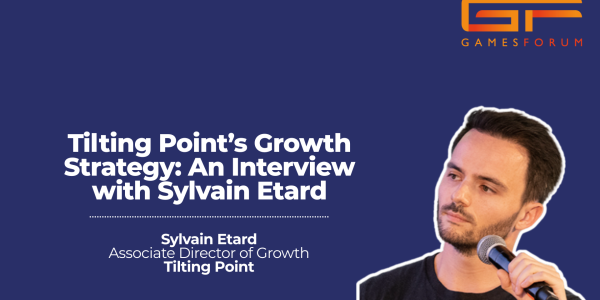Tales of Crestoria: A Visual Novel with Extra Steps

Tales of Crestoria is a star-studded auto-battler featuring a huge cast of villains and heroes from the 18-odd mainline titles in the Tales series. Much like any gacha-based auto-battler, the main gameplay loop revolves around defeating enemies in turn-based, JRPG-lite combat with a team of collectible heroes.
Crestoria Can Tell a Tale

The story in Tales of Crestoria is by far its greatest strength. Sure, the dialogue is clunky and ham-fisted and characters have a tendency to vocalize their thoughts (anime writers prefer to tell, rather than show), but Crestoria’s intense focus on the growth of its two protagonists, Kanata and Misella, makes for an intriguing, personal adventure.
Things start off innocently enough, with the player taking control of protagonist Kanata at the start of a training session with his teacher, Master Cress. The training session serves as a tutorial for the player, introducing them to the game’s combat and the various systems that affect combat ability.
After completing the tutorial, a local arrives at Cress’ home to report an assault on the local breadmaker. This leads to a hunt for the culprit that eventually reveals the truth beneath the sunny exterior of village life in Crestoria, an extra-dark turn that touches on some heavy topics, like the sexual exploitation of orphans and the chilling reality of the opinion-driven justice system in Crestoria.

In Crestoria, every person has a Vision Orb installed somewhere on their body that records everything they see, hear, and say. These recordings can be transmitted to Vision Central, a large, blue orb that sits at the center of the village, where they are played back and displayed for everyone to see. Those who view the video can cast judgment, sending negative sentiments back through Vision Central and into the Vision Orb of the person being judged.
If enough people make the call for your banishment, your Vision Orb breaks, summoning an ominous, hooded figure called an Enforcer to your location. An Enforcer, with a touch, will take you away to an unknown dimension where your tormented soul floats in the ether for eternity.

A sentence to banishment by public opinion in a world where anything can be recorded and shared with the people around you -- Crestoria’s allusions to internet cancel culture are a bit on the nose, but the game isn’t afraid to tackle some moral questions about the topic and explores them with care.
If only the writers had put as much care into explaining how its gacha heroes can exist in the same place at the same time. For example, Kanata encounters Velvet, the protagonist from Tales of Berseria, quite early into Crestoria, which implies that the events of both Crestoria and Berseria take place in parallel. Yet, for some reason, I can summon Sorey and Mikleo to join my party -- both characters from Tales of Zestiria, which takes place a full 1,000 years after the events of Berseria. The support character ability that lets you summon another player’s character even makes it possible for there to be two Kanatas in your party at the same time. I’m nitpicking, sure, but there isn’t even a handwavey explanation to offer some logical consolation.
Meeting Expectations

The Tales series is known for its combo-based, real-time battles, so I was curious how BANDAI NAMCO would translate that for a mobile platform. I’m sad to say that no attempt was made. Tales of Crestoria is your standard, turn-based auto-battler fare, mechanically quite similar to something like Raid: Shadow Legends.
This has raised a big question among the Tales community: what makes a Tales game? Without real-time combat, there isn’t much in the gameplay to differentiate Crestoria from your average auto-battler.
That isn’t to say the combat is entirely devoid of strategy.
The player and the CPU take turns attacking one another. During a turn, all of a party’s characters can attack, but the player decides the order in which they do so. This is important because each successful hit adds to a combo counter, and the damage each hit deals increases with the combo count. Many skills will hit multiple times, so using them early in a chain gives a damage boost to any attacks or skills that follow. I found myself using the combo system to maximize the damage dealt by my weaker party members, letting the stronger characters use skills that boost the combo count before finishing with the runt.

There’s also a simple, element-based rock-paper-scissors mechanic at play. You can deal more damage in battle by using skills that are effective against the natural element of your enemy. Theoretically, you would go into a stage with a party that is naturally strong against the elements of your enemy lineup.
Unfortunately, neither system is particularly well-thought-out or even useful; it’s almost always better to go into a fight with your most powerful lineup, regardless of elemental affinity. I can see how slight optimizations in combat could affect those PvP players battling at the highest level in the Arena, but the benefits are negligible for the rest of us who just want to play through the campaign.
Depth and complexity don’t mean much when your combat is so boring. The game looks great, and the animations are top-notch, but when most battles can be resolved with the auto-battle system, there isn’t much point to them.
Monetisation Model of the "Tales of Crestoria"

As a fan of the Tales series, I can say that playing Crestoria has been revelatory: I get the appeal of gacha now. There’s an undeniable rush when unlocking a character that you know from a previous game -- a bit like meeting an old friend again after a long time apart. It’s also brilliant advertising for their other titles as I was tempted on several occasions to fire up a Tales game.
As a gacha game, the speed of your progression correlates with the amount of money you spend on the game. Players who want to get the most out of this game without spending money will find themselves facing a massive grindwall. There are also “wait-to-play” elements that hamstring your progress, limiting the number of chances you have per day to earn the items necessary for upgrading your characters and advancing the plot.
Tales of Crestoria: Final Word

Tales of Crestoria is a sequence of excellent story sequences tied together by moments of mediocre combat -- a visual novel with extra steps. It’s a testament to the strength of its plot that I powered through so much of the tiresome battling just to see how things would play out for Kanata and Misella. If you’re a sucker for a great story, I’d give Tales of Crestoria a fair shake, even if you’re not a fan of the Tales series and can’t appreciate the various cameos sprinkled throughout. Those looking for a good JRPG or auto-battler, or fans hoping for a fully-fledged Tales game, should look elsewhere.
By Andi Nuruljihad for Gamesforum











